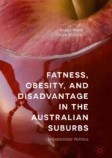Search
Search Results
-
Laboratory Investigation of Drug Exposure
Valid specimens, specific toxicological analysis and insightful interpretation are the keys to proving the presence of a harmful drug. Urine, blood,...
-
White opioids: Pharmaceutical race and the war on drugs that wasn’t
The US ‘War on Drugs’ has had a profound role in reinforcing racial hierarchies. Although Black Americans are no more likely than Whites to use...
-
Homicide in pregnant and postpartum women worldwide: a review of the literature
We review the international literature on a neglected aspect of maternal mortality: maternal homicide. Reported rates range from 0.97 to 10.6 per...

-
Drogen und Geschlecht
Geschlecht ist ein komplexer Begriff, der sich heute einer einfachen Definition entzieht. Zur Differenzierung zwischen Mann/Frau kommt die –...
-
Quality Perspectives
The previous chapter showed that, in its totality, the concept of quality is enormously rich. It carries a number of meanings, some of which are in...
-
Fat Can “Do Stuff”
Many cross-cultural and historical studies point to the value of fat bodies, where size is associated with status and capacity to be a productive...
-
Valuing the Relationship Between Drug and Alcohol Use and Life Satisfaction: Findings from the Crime Survey for England and Wales
We analysed the relationship between drug use and wellbeing using data from the Crime Survey for England and Wales. We focused on cannabis use, the...
-
Between Collaboration and Subordination: State and Non-state Actors in Russian Anti-drug Policy
Due to weak state and administrative capacity, the Russian government has involved resource-rich non-state actors into policy-making since about 2005...
-
Slippery Slopes and Trojan Horses: The Construction of E-Cigarettes as Risky Objects in Public Health Debate
Focusing on debates around the risk/benefits of e-cigarettes within the field of public health, this chapter argues that the for/against sides in...
-
‘HIV Both Starts and Stops with Me’: Configuring the Neoliberal Sexual Actor in HIV Prevention
This article argues that newer HIV prevention campaigns and health promotions that focus on reaching the public with information on how to prevent...
-
Problematizing Pain: Medical, Social and Commercial Approaches to Pain
This chapter explores the concept of pain in the medical, social and commercial fields. This chapter discusses the way general medicine approaches...
-
The Clinical Presentations
Drug involvement in child maltreatment may reveal itself in any of the classical syndromes of sedative, stimulant or opioid intoxication, in...
-
Relational Approach to the Political: Power, Governance, and Democracy
In this chapter, the authors highlight that all the three major phenomena of interest for political analysis can be conceptualized in terms of...
-
Films (and Plays)
In this chapter, I examine twenty-five films that are mainly about heroin or in which heroin is central to the plot/storyline and that were made and...
-
Politics and Drugs Policy in Britain
This chapter considers the complex world of policy where competing forces rise and fall in influence on the political stage, justifying the commonly...
-
The Re-emergence of Solar Geoengineering
This Chapter charts the re-emergence of solar geoengineering (SGE) into mainstream consideration as a policy option from the mid-2000s, linking this...
-
UK Drug Policy
This chapter gives an overview of the development of UK drugs policy since the MDA 1971. After noting changes in the social context, three phases are...
-
The Influence of Genetic Variation on Social Disposition, Romantic Relationships and Social Networks: a Replication Study
ObjectivesSociality is underpinned by a variety of neurochemicals. We previously showed, in a large healthy Caucasian sample, that genes for...

-
Traumatic Legacies: Sha** the Space of Risk
This chapter pursues the investigation on traces of risk in the landscape, and through memories of longtime residents. A discussion of the Oakland...
-
A Longitudinal Survey of Psychoactive Drug Abusers in Hong Kong
Little was known about the pharmacological properties of ketamine when it quickly became the most popular psychoactive drug of abuse among young drug...
